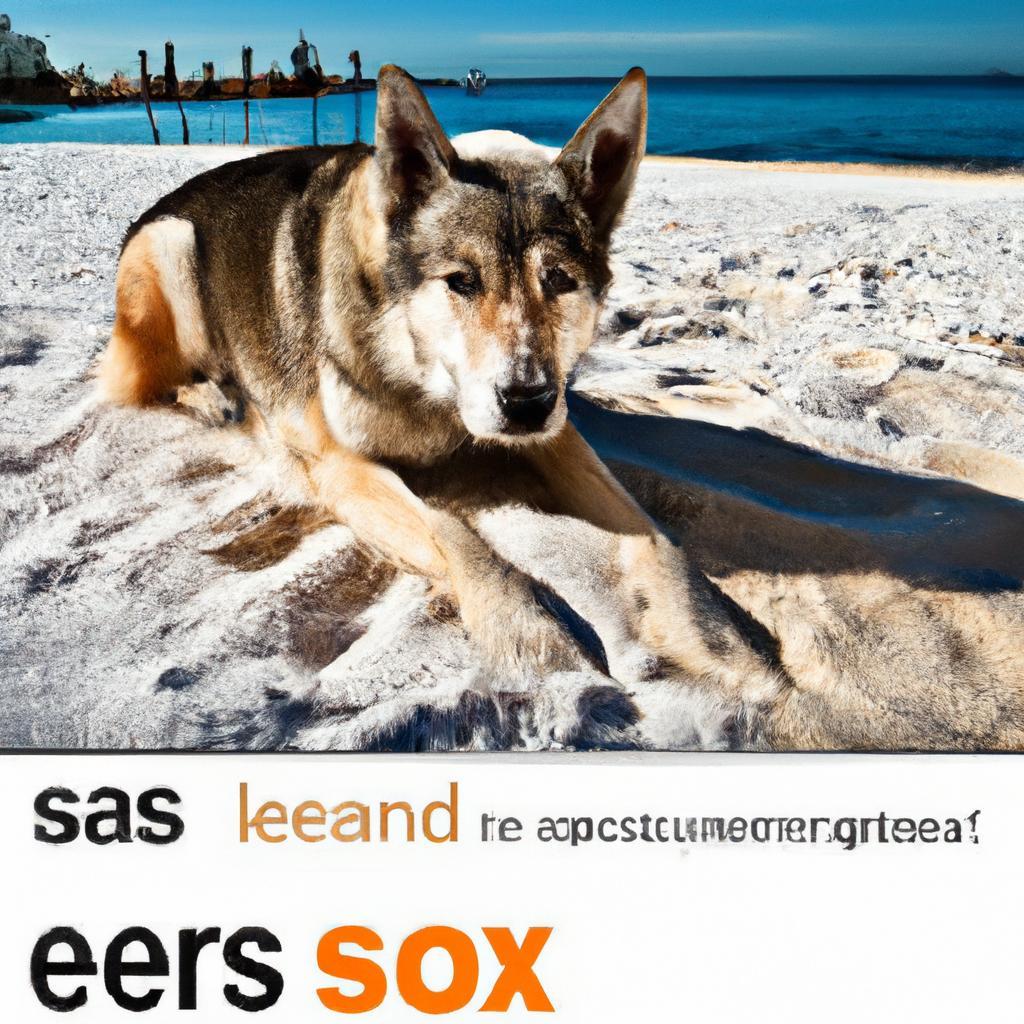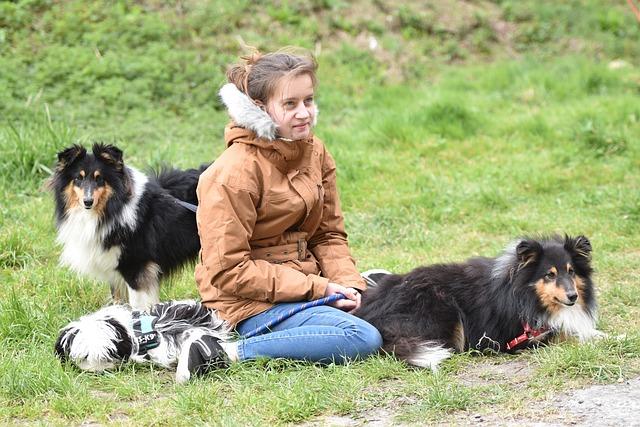In a quiet neighborhood, a family adopted a seemingly innocent puppy, unaware of its lineage. As it grew, so did its strength and instincts. One fateful day, the dog, a powerful breed known for its protective nature, sensed a threat and acted. The incident left the community shaken, sparking debates about the deadliest dog in the world. But is it the breed or the owner’s responsibility? Understanding and training are crucial. The deadliest dog isn’t defined by its breed, but by the care and guidance it receives. Choose wisely.
Contents
- Understanding the Characteristics of the Most Dangerous Dog Breeds
- Evaluating the Risks: Factors Contributing to Dog Aggression
- Responsible Ownership: How to Safeguard Against Dog Attacks
- Promoting Safety: Effective Strategies for Interacting with High-Risk Breeds
- Q&A
Understanding the Characteristics of the Most Dangerous Dog Breeds
When discussing the most dangerous dog breeds, it’s essential to understand that danger often stems from a combination of factors, including temperament, training, and socialization. Certain breeds have inherent traits that can make them more prone to aggressive behavior if not properly managed. For instance, breeds like the **Pit Bull**, **Rottweiler**, and **Doberman Pinscher** are often highlighted due to their strength and protective instincts. However, it’s crucial to recognize that these characteristics can be mitigated through responsible ownership and training.
Another significant aspect to consider is the role of environment and upbringing. Dogs that are raised in a nurturing and structured environment tend to develop better social skills and are less likely to exhibit aggressive tendencies. Conversely, dogs that experience neglect, abuse, or lack of socialization may become fearful or defensive, leading to dangerous behavior. This highlights the importance of understanding that a dog’s behavior is not solely determined by its breed but also by its life experiences.
Moreover, the perception of danger often varies among individuals and communities. Some breeds, such as the **German Shepherd** and **Chow Chow**, may be viewed as dangerous due to their size and strength, yet they can be incredibly loyal and gentle when properly trained. It’s essential to approach the topic with an open mind and recognize that labeling a breed as “deadly” can perpetuate stigma and fear. Instead, focusing on responsible ownership and education can lead to safer interactions between dogs and humans.
Lastly, understanding the characteristics of these breeds can empower potential dog owners to make informed decisions. By researching and recognizing the traits associated with various breeds, individuals can select a dog that aligns with their lifestyle and experience level. This proactive approach not only enhances the safety of the community but also ensures that dogs are given the opportunity to thrive in a loving and supportive environment.
Evaluating the Risks: Factors Contributing to Dog Aggression
Understanding the complexities of dog aggression requires a nuanced approach, as various factors can contribute to a dog’s behavior. **Genetics** play a crucial role; certain breeds are predisposed to aggressive tendencies due to their lineage. For instance, breeds that were historically used for guarding or hunting may exhibit more protective or territorial behaviors. This genetic predisposition does not guarantee aggression but can increase the likelihood under specific circumstances.
Another significant factor is **environmental influences**. Dogs raised in a nurturing and stable environment are generally more well-adjusted than those exposed to neglect, abuse, or chaotic surroundings. Early socialization is vital; dogs that are not adequately exposed to different people, animals, and situations during their formative months may develop fear-based aggression. This fear can manifest in defensive behaviors when they feel threatened or cornered.
Lastly, **health issues** can significantly impact a dog’s behavior. Pain or discomfort from medical conditions can lead to irritability and aggression, as the dog may react defensively when touched or approached. Regular veterinary check-ups are essential to ensure that any underlying health problems are identified and treated promptly. By understanding these contributing factors, we can better address and mitigate the risks associated with dog aggression, ultimately fostering safer interactions between dogs and humans.
Responsible Ownership: How to Safeguard Against Dog Attacks
Owning a dog comes with a significant responsibility that extends beyond mere companionship. To ensure a safe environment for both your pet and the community, it is crucial to implement effective strategies that minimize the risk of dog attacks. **Training** is paramount; investing time in obedience training can help your dog understand commands and appropriate behavior, reducing the likelihood of aggressive incidents. A well-trained dog is less likely to react negatively to unfamiliar situations or people.
Another essential aspect of responsible ownership is **socialization**. Exposing your dog to various environments, people, and other animals from a young age can significantly decrease anxiety and fear-based aggression. Regular interactions in controlled settings, such as dog parks or training classes, can help your dog develop confidence and learn how to behave appropriately in diverse situations. Remember, a well-socialized dog is often a well-adjusted dog.
Proper **supervision** is also critical in preventing potential attacks. Always keep your dog on a leash in public spaces and ensure that your yard is securely fenced. This not only protects your dog but also safeguards others from unexpected encounters. Additionally, be mindful of your dog’s body language; signs of stress or discomfort should prompt you to intervene before a situation escalates. Understanding your dog’s behavior can be the key to preventing incidents.
Lastly, consider the importance of **responsible breeding**. If you are acquiring a dog, research breeds thoroughly and choose one that fits your lifestyle and experience level. Some breeds may require more training and socialization than others. By selecting a breed that aligns with your capabilities as an owner, you can foster a harmonious relationship that minimizes risks. Remember, the foundation of a safe community lies in the hands of responsible dog owners.
Promoting Safety: Effective Strategies for Interacting with High-Risk Breeds
When engaging with high-risk breeds, it is essential to prioritize safety through informed and respectful interactions. Understanding the breed’s characteristics and behaviors can significantly reduce the likelihood of negative encounters. **Education** is key; familiarize yourself with the specific traits and tendencies of the breed in question. This knowledge allows for better anticipation of potential reactions and helps in creating a safer environment for both the dog and the handler.
Establishing clear boundaries is another effective strategy. Dogs, especially those considered high-risk, thrive on structure and consistency. **Training** should focus on obedience and socialization, ensuring that the dog understands commands and appropriate behaviors. Implementing positive reinforcement techniques can foster a trusting relationship, making the dog more responsive and less likely to exhibit aggressive tendencies. Regular training sessions can also help owners maintain control and confidence during interactions.
Creating a safe space for both the dog and the people around it is crucial. This involves **environmental management**, such as using secure leashes, muzzles when necessary, and ensuring that the dog is in a controlled setting during interactions. Avoiding crowded or chaotic environments can minimize stress for the dog, reducing the chances of unpredictable behavior. Additionally, always be aware of the dog’s body language; recognizing signs of discomfort or agitation can help prevent escalation.
Lastly, fostering a community of responsible ownership can enhance safety for everyone involved. **Networking** with other dog owners and professionals can provide valuable insights and support. Sharing experiences and strategies can lead to better practices in handling high-risk breeds. Encouraging responsible pet ownership through education and awareness campaigns can also contribute to a more informed public, ultimately promoting safer interactions with all dogs, regardless of breed.
Q&A
-
What breed is considered the deadliest dog in the world?
The Pit Bull is often cited as one of the deadliest dog breeds due to its strength, agility, and history of aggressive behavior. However, it’s essential to understand that aggression is largely influenced by training and environment rather than breed alone.
-
Are certain breeds more prone to aggression than others?
While some breeds, such as Rottweilers and Doberman Pinschers, may have a reputation for aggression, it is crucial to recognize that individual temperament varies. Factors such as upbringing, socialization, and training play a significant role in a dog’s behavior.
-
Can training prevent a dog from being dangerous?
Absolutely. Proper training and socialization can significantly reduce the likelihood of aggressive behavior in any dog. Responsible ownership, including consistent training and positive reinforcement, is key to ensuring a dog is well-adjusted and safe.
-
What should I do if I encounter an aggressive dog?
If you encounter an aggressive dog, remain calm and avoid direct eye contact. Do not run away, as this may trigger a chase response. Instead, back away slowly and seek safety. If you are a dog owner, ensure your pet is trained to respond appropriately to other dogs and people.
understanding the characteristics and behaviors of the world’s deadliest dogs is crucial for responsible ownership and public safety. By fostering awareness and education, we can ensure a safer environment for both humans and canines alike.

大家好,我是彼得潘,專業的手法身體治療師。我喜歡探索和研究各種主題,並透過與人工智慧的合作分享專業、實用、有趣的文章。我們定期進行人工審核,以確保內容的準確性。如果您發現文章中有任何不準確的地方,請隨時與我們聯繫,我們會及時糾正。您可以透過 [email protected] 與我們聯繫。



